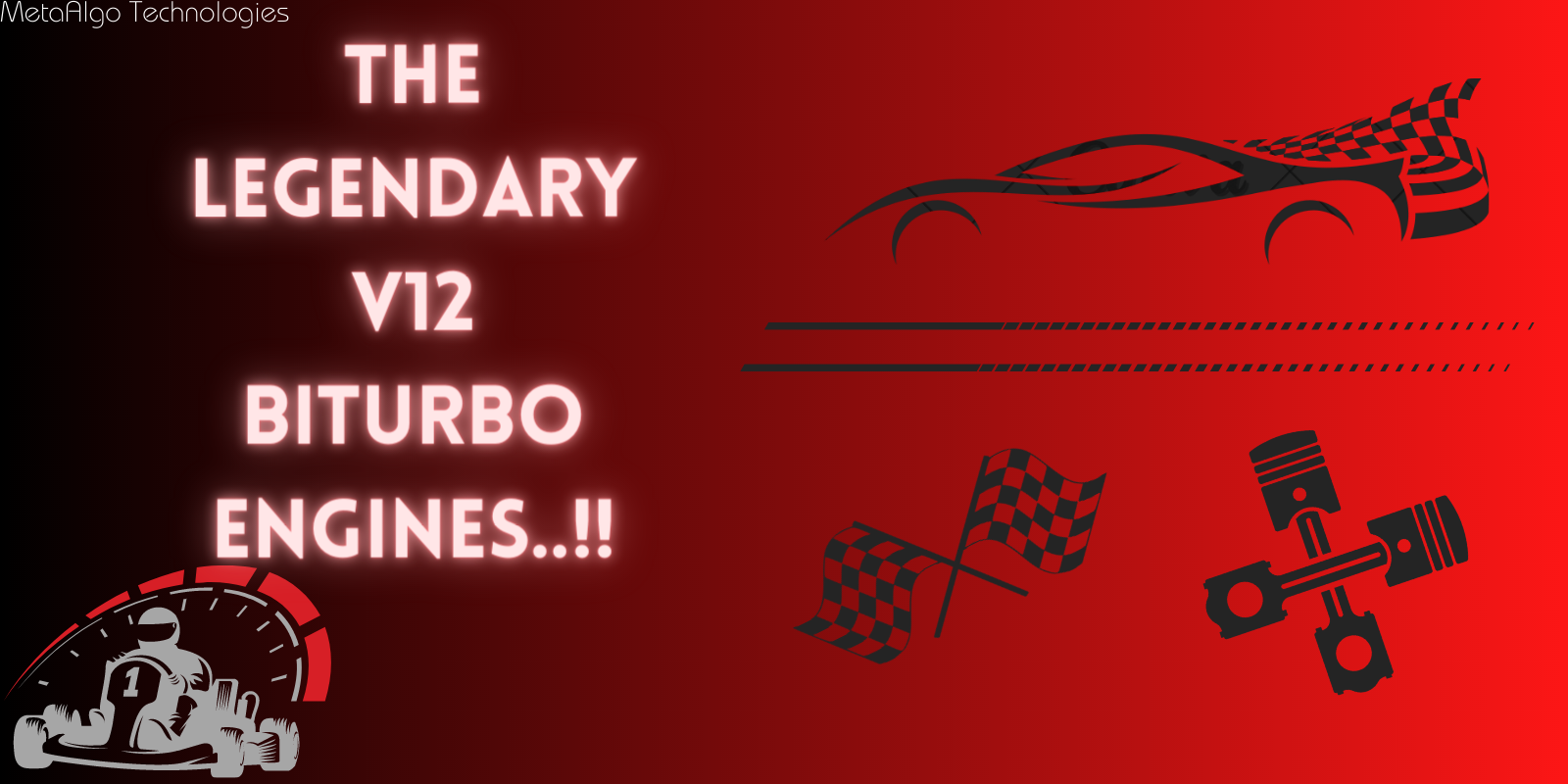The Legendary V12 Biturbo Engines
 TurboHead
TurboHeadTable of contents

A high-performance engine known as a V12 biturbo employs a V-shaped configuration with 12 cylinders and a twin turbocharger setup. The twin turbocharger system increases performance potential while the V12 engine design is renowned for its smoothness and strength.
Due to its high possible power production, this sort of engine is frequently found in high-performance and luxury cars. With more air being pushed into the engine thanks to the twin turbocharger system, more gasoline can be consumed and more power can be produced.
The Mercedes-Benz S65 AMG, Aston Martin DB11, and Ferrari 812 Superfast are a few instances of automobiles with V12 biturbo engines. The most costly and exclusive cars are those that use these engines because of their high cost.
Working
An intricate procedure of air entry, fuel infusion, combustion, and exhaust is required for a V12 biturbo engine to function. Here is a brief explanation of how a V12 biturbo motor operates:
Air Intake: Air is filtered by the engine and then sent to the turbochargers, where it is compressed and forced into the engine's inlet pipe.
Fuel Injection: The combustion chambers in each cylinder, which are above the cylinders, are where the engine injects gasoline. A extremely combustible combination is produced when the compressed air and gasoline are combined.
Combustion: The detonation that results from the gasoline and air combination being lit by the spark plugs forces the piston downward, turning the crankshaft, and producing power.
Exhaust: The engine's exhaust system, which consists of the exhaust manifold, catalytic converter, and muffler, is then used to release the consumed gasoline and air combination into the atmosphere.
A V12 biturbo engine's two turbocharger technology functions by compressing more air into the engine, which results in a more potent gasoline and air mixture and increased output. To maximise the speed and efficiency of the engine, the engine management system regulates the quantity of fuel and oxygen that are injected into it.
The V12 biturbo engine is an extremely complex and advanced piece of tech that needs careful tuning and upkeep to operate at its peak.
Power Figures
V12 biturbo engines power ratings can change based on the model, the maker, the engine's year and generation. However, V12 biturbo engines are renowned for their impressive performance skills and high power production.
Power estimates for V12 turbo motors include some of the following:
| Vehicle | Engine | Power Output | Torque Output |
| Bugatti Chiron | 8.0L W16 quad-turbocharged | 1,479 hp | 1,180 lb-ft |
| Rolls-Royce Phantom | 6.75L V12 | 563 hp | 664 lb-ft |
| Ferrari 812 Superfast | 6.5L V12 | 789 hp | 530 lb-ft |
| Lamborghini Aventador | 6.5L V12 | 740 hp | 509 lb-ft |
| Bentley Continental GT | 6.0L V12 biturbo | 626 hp | 664 lb-ft |
| Mercedes-AMG S65 | 6.0L V12 biturbo | 621 hp | 738 lb-ft |
| Aston Martin DB11 | 5.2L V12 biturbo | 630 hp | 516 lb-ft |
Please take note that based on the particular trim level or engine setup, these power and torque numbers may differ from those for the most current model years of each car.
Conclusion
V12 biturbo engines are renowned for their exceptional power and efficiency skills, to sum up. Twin turbochargers on these engines, which usually have 12 cylinders set up in a V configuration, enable them to produce more power and torque. High-performance and opulent automobiles from manufacturers like Mercedes-Benz, Aston Martin, Ferrari, Lamborghini, Bentley, Bugatti, and Rolls-Royce frequently feature V12 biturbo motors.
Although V12 biturbo engines have impressive power and efficiency, they are usually very costly to make and keep, and because of their high gasoline consumption and emissions, they might not be the most ecologically friendly option. Furthermore, compared to simpler engine designs, the added complexity of these engines may make them more challenging to fix or alter. The V12 biturbo engine is still a common and remarkable option for those who value high-performance and luxurious cars.
Subscribe to my newsletter
Read articles from TurboHead directly inside your inbox. Subscribe to the newsletter, and don't miss out.
Written by
